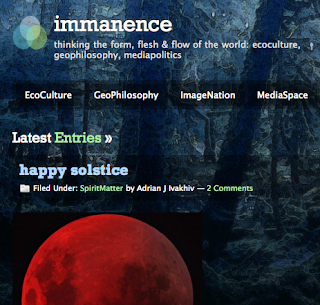Seed magazine has a special issue on new approaches to interconnected and complex challenges. It also features interesting articles on TEEB and ecological economics, new modes of science, forecasting, tipping points and systematic risk. As well as, Carl Folke’s article on resilience, which I mentioned previously.
Economist Ian Goldin writes on On Systemic risks
Systemic risk is the underbelly of globalization and technical change. Intense integration of markets, trade, and finance has accompanied the latest tidal wave of globalization, facilitated by seismic policy shifts, like those associated with the fall of the Soviet Union, the formation of the European Union, and the opening of emerging economies. Between 1980 and 2005, global foreign-investment flows increased 18 times, and trade flows increased more than sevenfold, reflecting unprecedented integration.
… While the term “systemic risk” has historically referred mainly to collapses in finance, recent decades of globalization have created new and broader risks. There has been an exponential increase in the number of nodes and pathways through which materials, capital, information, and knowledge can be transmitted at lightning speeds and with global reach. These networks also have the potential to create and propagate risk. Interconnectedness, networks’ central property, can lead simultaneously to greater robustness and more fragility. Risk can decline as connectivity increases because as risk sharing increases, so does the number of nodes and links. This is true of financial systems, manufacturing services, intellectual property, and ecosystems. However, increased fragility is also a concern. Once a tipping point is triggered past its threshold, connectivity can amplify and spread risk instead of sharing it stably.
Looming systemic risks include pandemics, which may spread more rapidly across a densely connected world, and bio-terrorism risks, which are likely to become increasingly systemic in the 21st century. The ability to produce biological and other weapons of mass destruction is becoming more widespread, especially among non-state actors, due to technological innovation (not least with the development of DNA synthesizers). Increases in population density, urbanization, and the growth of connectivity, both physically and virtually, means that dangerous recipes and panic can be instantaneously transmitted globally. And climate change, a silent tsunami that crept up on us, presents major systemic environmental, social, and economic risks to humanity.
In an article On Early Warning Signs of tipping points ecologist George Sugihara writes:
A key phenomenon known for decades is so-called “critical slowing” as a threshold approaches. That is, a system’s dynamic response to external perturbations becomes more sluggish near tipping points. Mathematically, this property gives rise to increased inertia in the ups and downs of things like temperature or population numbers—we call this inertia “autocorrelation”—which in turn can result in larger swings, or more volatility. In some cases, it can even produce “flickering,” or rapid alternation from one stable state to another (picture a lake ricocheting back and forth between being clear and oxygenated versus algae-ridden and oxygen-starved). Another related early signaling behavior is an increase in “spatial resonance”: Pulses occurring in neighboring parts of the web become synchronized. Nearby brain cells fire in unison minutes to hours prior to an epileptic seizure, for example, and global financial markets pulse together. The autocorrelation that comes from critical slowing has been shown to be a particularly good indicator of certain geologic climate-change events, such as the greenhouse-icehouse transition that occurred 34 million years ago; the inertial effect of climate-system slowing built up gradually over millions of years, suddenly ending in a rapid shift that turned a fully lush, green planet into one with polar regions blanketed in ice.
The global financial meltdown illustrates the phenomenon of critical slowing and spatial resonance. Leading up to the crash, there was a marked increase in homogeneity among institutions, both in their revenue-generating strategies as well as in their risk-management strategies, thus increasing correlation among funds and across countries—an early warning. Indeed, with regard to risk management through diversification, it is ironic that diversification became so extreme that diversification was lost: Everyone owning part of everything creates complete homogeneity. Reducing risk by increasing portfolio diversity makes sense for each individual institution, but if everyone does it, it creates huge group or system-wide risk. Mathematically, such homogeneity leads to increased connectivity in the financial system, and the number and strength of these linkages grow as homogeneity increases. Thus, the consequence of increasing connectivity is to destabilize a generic complex system: Each institution becomes more affected by the balance sheets of neighboring institutions than by its own. The role of systemic risk monitoring, then, could simply be rapid detection and dissemination of potential imbalances, much as we allow frequent underbrush fires to burn in order to forestall catastrophic wildfires. Provided that these kinds of imbalances can be rapidly identified, maybe we will need no regulation beyond swift diffusion of information. Having frequent, small disruptions could even be the sign of a healthy, innovative financial system.
Further tactical lessons could be drawn from similarities in the structure of bank payment networks and cooperative, or “mutualistic,” networks in biology. These structures are thought to promote network growth and support more species. Consider the case of plants and their insect pollinators: Each group benefits the other, but there is competition within groups. If pollinators interact with promiscuous plants (generalists that benefit from many different insect species), the overall competition among insects and plants decreases and the system can grow very large.
Relationships of this kind are seen in financial systems too, where small specialist banks interact with large generalist banks. Interestingly, the same hierarchical structure that promotes biodiversity in plant-animal cooperative networks may increase the risk of large-scale systemic failures: Mutualism facilitates greater biodiversity, but it also creates the potential for many contingent species to go extinct, particularly if large, well-connected generalists—certain large banks, for instance—disappear. It becomes an argument for the “too big to fail” policy, in which the size of the company’s Facebook network matters more than the size of its balance sheet.





